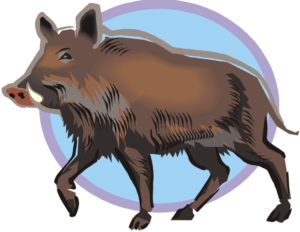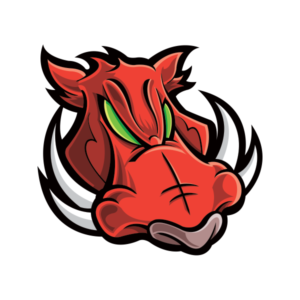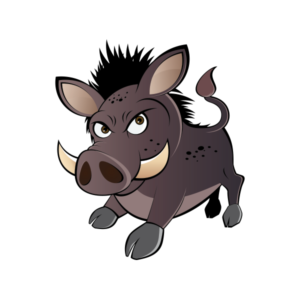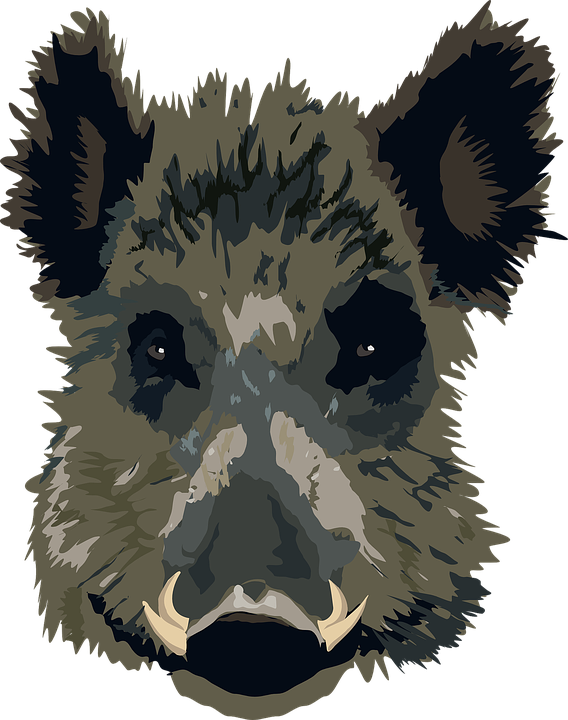Alvin Hog Removal and Trapping
High-Tech Feral Pig Control and Removal Solutions
[no_toc]
Hog Removal and Animal Trapping Service Alvin TX
Alvin Company
 Are you in need of professional hog removal Alvin service? Feral boar control in Texas requires extensive planning and research to prevent unwanted consequences from avoiding eradication. The benefits involved with such a boar eradication management program include stopping land & property damage, harm to livestock, loss of crop production, reduction in food availability. Although this practice is not considered to be inherently dangerous, feral pigs do pose a risk to both humans and livestock when not handled properly. This is why proper planning to remove pigs and implementation are critical to the success of a management project.
Are you in need of professional hog removal Alvin service? Feral boar control in Texas requires extensive planning and research to prevent unwanted consequences from avoiding eradication. The benefits involved with such a boar eradication management program include stopping land & property damage, harm to livestock, loss of crop production, reduction in food availability. Although this practice is not considered to be inherently dangerous, feral pigs do pose a risk to both humans and livestock when not handled properly. This is why proper planning to remove pigs and implementation are critical to the success of a management project.
Many states, including Texas, have established regulations for removing pigs and have enacted laws that prohibit their possession. Although not all states have these laws, many municipalities require that livestock owners to register their animals with local wildlife departments. Programs often require that the animals be removed within a specified period of time. In some cases, the animals may be taken away by trap or by humane feral pig trapping, but the animals may be relocated to another area. Some landowners will allow relocation on their property only, while others require the boar trapping service to come onto the property and remove the animals from the land.
Feral Hogs
 Alvin’s feral boar management programs can be very successful in providing the animals with a more productive and safe living environment. In the case of feral pigs, a professional service can safely and humanely remove the animals from residential areas, commercial properties, farms, forests, or other areas without damaging any property, livestock, or the environment. Texas is home to the most prolific population of feral pigs in Texas, with an estimate of about 2.3 million of the estimated annual nationwide population of about 4 million. This large number of pigs, which can weigh up to 100 pounds, can become a significant nuisance if not managed properly.
Alvin’s feral boar management programs can be very successful in providing the animals with a more productive and safe living environment. In the case of feral pigs, a professional service can safely and humanely remove the animals from residential areas, commercial properties, farms, forests, or other areas without damaging any property, livestock, or the environment. Texas is home to the most prolific population of feral pigs in Texas, with an estimate of about 2.3 million of the estimated annual nationwide population of about 4 million. This large number of pigs, which can weigh up to 100 pounds, can become a significant nuisance if not managed properly.
Feral pig removal service if an animal were to escape from a farm or ranch, it could destroy crops, cause property damage, or even attack people. These animals can create potential health hazards and spread disease to livestock and humans as well as cause damage to natural resources. When livestock are injured or killed, the owners may need to obtain animal and wildlife control services to safely remove the animals and prevent further damage to the area.
 Feral pigs removed from a Alvin TX community must undergo a thorough inspection prior to traps being set. The reason for this inspection is to make sure the animals are healthy, free of disease, and free from parasites. Most companies will provide an inspection report after the animals have been removed. This is done before the pigs removed to determine the safety and health of the animals, before removing them to another location, and after the animals are removed. If there are any issues with the removal, the company can advise the homeowner on proper care for the animals to ensure their health in the new location.
Feral pigs removed from a Alvin TX community must undergo a thorough inspection prior to traps being set. The reason for this inspection is to make sure the animals are healthy, free of disease, and free from parasites. Most companies will provide an inspection report after the animals have been removed. This is done before the pigs removed to determine the safety and health of the animals, before removing them to another location, and after the animals are removed. If there are any issues with the removal, the company can advise the homeowner on proper care for the animals to ensure their health in the new location.
FERAL HOG REMOVAL IN LOUISIANA
Feral pigs are one of the most common animals living in the wild, feral pig removal is such a problem that there are TV series made it. A large boar boar can weigh over 250 pounds, though a lot of pigs weigh in around 150 pounds.
Feral pigs are an ever growing nuisance throughout North America and much of the world. Feral pigs are opportunistic omnivorous feeders that consume nearly anything they stumble upon including yard, nuts, berries, carrion, nests of ground nesting birds, roots, roots, refuse, insects, and little reptiles. Feral pigs vigorously root up the soil looking for these food items and are capable of destroying acres and acres of land in a single night ruining yards, shrubs, trees, landscaping, agricultural fields, and harmful water retention and drainage areas such as levies, dams, and canals. Government stats in 2008 suggested that feral pigs cause an approximated $800 million of property damage annually in the U.S. alone which number continues to rise. The majority of states in the U.S. have stated feral pigs to be a nuisance intrusive types and spend large amounts of cash in efforts to control them. Feral pigs not only damage property however also kill, take in, and out compete numerous native plant and animal types. Texas is home to the biggest population of feral pigs in the U.S. with an estimated population in excess of 2 million out of the projected nationwide population of over 4 million. In spite of many efforts at feral boar trapping, these population numbers continue to increase as they can replicating at fast rates. Female pigs, known as sows, are sexually fully grown at 8 months of age and can having two litters annually with each litter potentially containing up to 14 piglets.
Feral pigs are known for their aggressive nature, making feral boar trapping very dangerous. If threatened, feral pigs will charge complete speed causing damage with the effect of their tough thick skulls. The majority of attacks are treatable, some casualties have actually happened from feral boar attacks.
WHAT HEALTH RISKS DO FERAL HOGS POSE
Acknowledged endemic locations of anthrax cases in feral pigs include parts of Texas, Louisiana, California, Arkansas, Mississippi, Nebraska, South Dakota, and little locations in other states. Feral pigs likewise harbor parasites such as boar lice, ticks, and endoparasites consisting of worms and flukes. All of these things make feral boar trapping a leading priority anytime you see them on your property.
The reason our feral hog removal and wild animal control system is farmer authorized is because there is never ever a need to fret about wild animals or native wildlife getting caught in our traps. Likewise, we do not just trap one or two feral pigs at a time we capture the entire sounder (herd). Our objective as wild animal control experts and trappers is to eliminate the problem, remove the cost of damages, and enhance the native wildlife, which currently competes for food with these nuisance animals.
After setting up our animal trap, our group of professionals continually views the cam for feral boar activity occurring in real-time. As the pigs go into the trap, we are alerted immediately via transmitted cellular signals. Upon doing recon, we have a pretty great idea of the number of pigs within the group, so we wait till all of the pigs have gotten in the trap prior to making our relocation.
More About Wild feral pigs
- Likewise described as feral pigs, feral pigs in Texas descended from introductions of European feral pigs for sporting functions, and from gotten away domestic swine that have established feral populations. European wild pigs have a number of identifying characteristics that set them apart from domestic or feral pigs. European wild pigs and feral pigs interbreed easily, with traits of European wild pigsobviously being dominant.
- Feral pigs have established sizeable, free-ranging populations in different put on the Rio Grande and Coastal Plains, in addition to the woody country of eastern Texas.
- Good feral boar environment in timbered areas includes varied forests with some openings. Throughout hot summer months, “wallows,” or depressions dug in the mud by feral pigs, are much in evidence near marshes or standing water, such as along roadside ditches.
- Feral pigs usually reproduce year round; litters range from one to seven, averaging two per plant. Approximately one to 3 nursing pigs normally accompanies brood sows. The heat duration is only about 48 hours in duration and the typical gestation period is 115 days.
Feral pigs are known for their aggressive nature. Boars are usually most aggressive throughout mating seasons and females are aggressive when safeguarding their young. If threatened, feral pigs will charge full speed triggering damage with the effect of their difficult thick skulls. Sows normally have small tusks and therefore charge with an open mouth and bite. Boars typically have large tusks and whip their heads upward on impact causing serious lacerations. A lot of injuries to humans normally happen on the upper leg due to the typical height of most feral pigs. Many attacks are treatable, some casualties have taken place from feral boar attacks.
Feral pigs also spread numerous illness to people and animals and pose a significant risk to livestock. Acknowledged endemic areas of anthrax cases in feral pigs include portions of Texas, Louisiana, California, Arkansas, Mississippi, Nebraska, South Dakota, and little areas in other states. Feral pigs also harbor parasites such as feral boar lice, ticks, and endoparasites including worms and flukes.
Feral pig removal and feral boar control is a labor-intensive process that requires specific knowledge and experience of animal habits. If you need feral pig removal, feral boar trapping, or long term feral boar control, Wildernex can provide these services to secure you and your property.
Description
Feral pigs might appear basically the like domestic pigs and will vary in color and coat pattern. A mature feral boar might reach a shoulder height of 36 inches and weigh from 100 to over 400 pounds. The extreme bigger pigs are usually not far gotten rid of from domestication. Males are generally larger than females. European wild pigs are about the exact same size; however, their legs and snouts are usually longer and they have a bigger head in proportion to the body. Their body is covered with long, stiff, grizzled colored hairs, long side hairs, a longer straighter tail, and a neck on the neck giving the European hog a razorback, sloped appearance. The crossing of European and feral hogs frequently produces an offspring with some European qualities. Feral pigs are more muscular than domestic pigs, and have really little fat.
Furthermore, the hairs of European appearing hogs and their hybrids regularly have multiple split ends. The young are born a reddish color with black longitudinal stripes. As they grow, the coat color ends up being primarily dark brown or black.
Hogs have 4 continuously growing tusks (two on the top, two on bottom) and their contact triggers a continuous sharpening of the lower tusks. They have relatively poor eyesight but have eager senses of hearing and smell
Feral pigs are distributed throughout much of Texas, usually living in the white-tailed deer range, with the greatest population densities happening in East, South and Central Texas. There is currently an approximated population in excess of 1.5 million feral pigs in Texas.
The increase in population and distribution is due in part to deliberate releases, enhanced environment, increased wildlife management, and enhanced animal husbandry such as illness eradication, limited natural predators, and high reproductive capacity. There appear to be extremely couple of preventing aspects to reduce this population growth and distribution although extreme arid conditions might hamper it.
What do feral pigs consume?
Feral pigs are omnivorous, meaning they consume both plant and animal matter. They are extremely opportunistic feeders and much of their diet plan is based upon seasonal accessibility. Foods include yards, forbs, roots and bulbs, browse, mast (acorns), fruits, bulbs and mushrooms. Animal matter consists of invertebrates (pests, snails, earthworms, and so on), reptiles, amphibians, and carrion (dead animals), along with live mammals and birds if provided the opportunity. Feral pigs are specifically fond of acorns and domestic farming crops such as corn, milo, rice, wheat, soybeans, peanuts, potatoes, watermelons and cantaloupe. Feral pigs feed primarily during the night and throughout twilight hours, however will likewise feed during daytime in cold or damp weather.
CALL NOW!

Bulletproof Management
When it comes to hog removal, there are few solutions that can be considered bulletproof. We understand that for those that have already faced property damages, it’s a very high risk to hire someone that can not guarantee 100% success. Because of this, we have abandoned all traditional trapping methods and changed all protocols to ensure that we are offering a solution with the highest possible catch ratio. The comfort and complete satisfaction of our clients is at the forefront of efforts. Our satisfaction comes from your satisfaction.
Military Grade Technology
We don't set traps and hope...
The common hog management approach to controlling feral pigs is typically trapping and / or snaring. The problem here? Hogs are extremely smart and more times than not, they just aren’t willing to enter little hog pen traps. When damage is being done, this is simply not a practical approach to stopping wild hog damage in a timely manner.
We strategically set, aim and fire!
We take hog control to a whole new level with the most technologically advanced, military grade system on the market. This gives us the advantage of utilizing wireless cameras and thermal imaging devices with remotely activated traps, bypassing issues of a single hog setting off traps before others enter or traps just simply not being triggered at all.
HIGH TECH
Feral hog sows produce 1.5 litters per year on average, with six piglets in each, though a single litter may include up to 14 piglets.
Female feral hogs typically reach sexual maturity as young as 3-4 months of age; however, most wild sows reach puberty by the time they are one year old. Females of this species are polyestrous, being able to come into estrus every 18-24 days if they are not successfully bred.
TRAPS SET
PIGS TRAPPED
PROPERTIES
Call us today for “hog removal service Alvin”!
